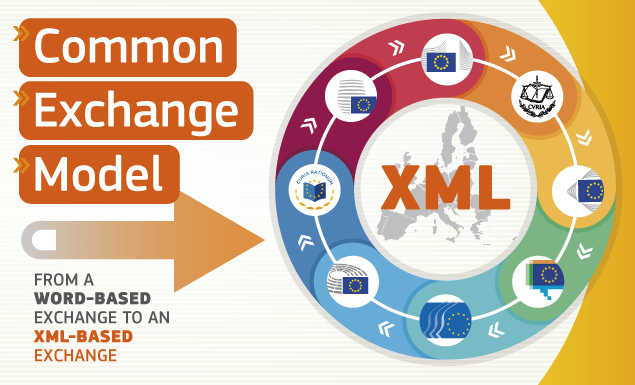/isa2/file/mid-term-conference-2018-banner-984x385-v06jpg_enmid-term-conference-2018-banner-984x385-v06.jpg


Standardisation of legal content facilitating data exchange
The European Institutions are moving from a semi-structured Word-based format to a structured XML-based format for exchanging data in the legislative process. The aim is to better exploit the benefits that structured mark-up of document content has to offer.
In this context, the European Institutions are working collaboratively on the Common Exchange Model (CEM). The CEM translates structural concepts defined by business representatives into a technical specification for implementation. It is based on the OASIS Akoma Ntoso standard and aims at ensuring interoperability for document exchanges between the EU Institutions within the scope of the legislative process.
The Interinstitutional Metadata and Formats Committee (IMFC), chaired by the Publications Office of the EU and bringing together representatives from all EU Institutions, coordinates the elaboration of the CEM.
Common Exchange Model – What for?
The benefits of the CEM are the streamlining and increased efficiency of the exchange of legal content as part of the legislative process in all official EU language versions. In addition, the CEM will allow automation and validation of content. It will also facilitate machine-readable access and reuse of legal resources produced by the EU Institutions.
The standardisation work is complemented by the elaboration of XML editing tools (LEOS/EdiT), a validation framework and a converter for re-use of already published legal data.
At the Common Exchange Model stand you can find out more about the CEM, explore the semantic concepts based on the analysis of example documents pertaining to the Ordinary Legislative Procedure – (regulations, decisions and directives as well as proposals for these types of acts) and discuss directly with the people involved in the elaboration of the CEM.